Steve travels #23: Tashkent
The city is so much bigger and wealthier than Bishkek or Almaty it takes some time to adjust. Bishkek has some nice modern buildings, but across the road will be a dilapidated house or a vacant block or a half-constructed multistory concrete edifice, so the illusion of a modern city falls apart quickly. Tashkent is more seamless, entire neighbourhoods managing to hold the illusion together.
The road surfaces are perfect. Footpaths, if not quite forming a logical pedestrian network, at least don’t suddenly get blocked by a pile of gravel or force you to walk through building rubble for half a kilometre. There are lawns, gardens and parks that…work.
Forming a coherent plan for my first sortie feels like work, so as usual I just head off in a random direction. There’s a river, but it’s hard to access it, which makes it much more appealing. Competition kayakers are emerging from a practice session, so I follow their goat track down to a swift (if not actually white-water) river buried in lush vegetation. It could be very pretty, but the evidently the city mostly sees it as a drowning risk, with many signs warning to keep away.
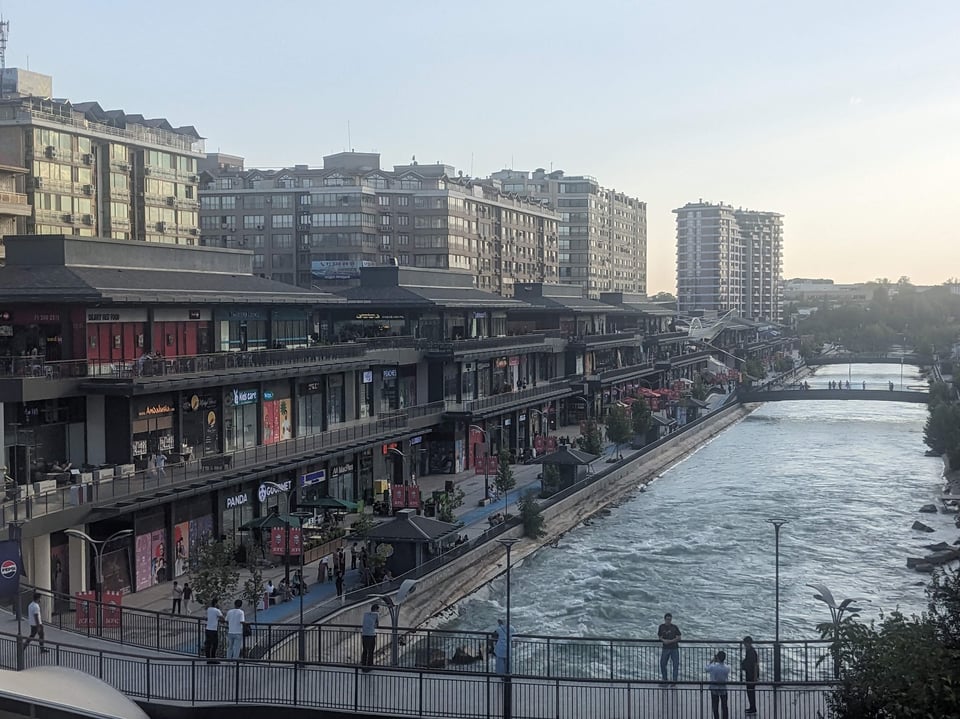
Downstream, the river suddenly bursts from its natural habitat into a rather elegant highly constructed riverfront shopping strip, with several tiers of pedestrian walkways. It feels so much like Melbourne’s Southgate but…better? A synchronised system of a hundred water jets is creating an amazing display to a pumping western pop soundtrack, and it’s going down a treat. People are dancing, kids are squealing when they get hit by water, everyone’s having a great time.
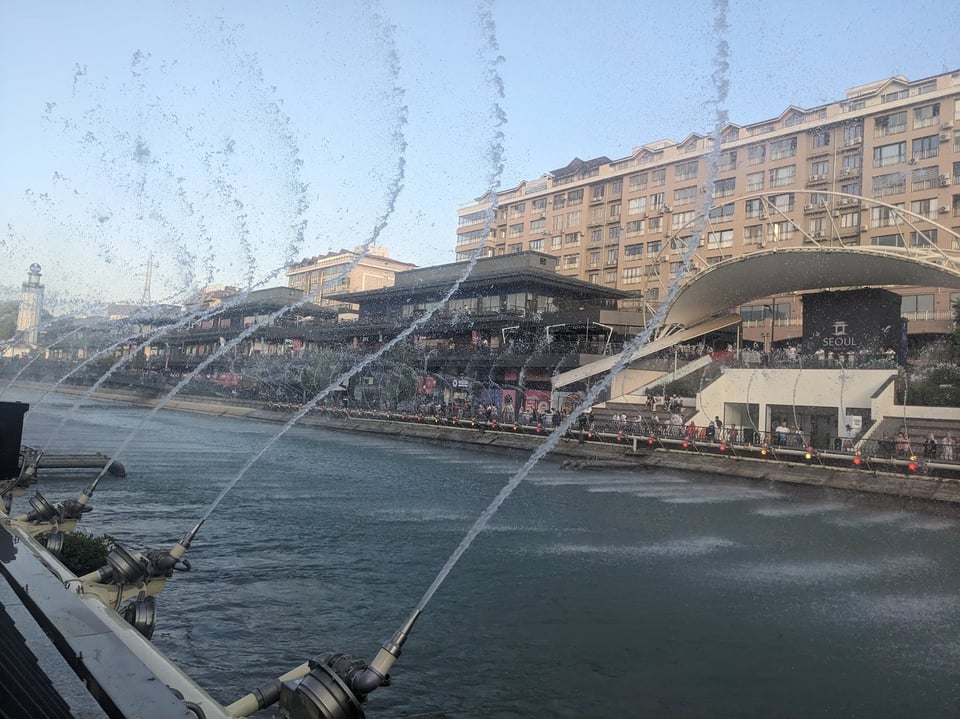
In a city where suddenly every possible cuisine seems to be on offer, I somehow end up at…Wendy’s? Outside, a number of vendors are selling some kind of ice-cream and fruit concoction, theatrically dicing frozen fruit with a pair of blades.
The further I wander, the posher it gets, dozens of fancy restaurants, and no shortage of customers. Unlike Kyrgyzstan, English is suddenly everywhere, on signs, business names, and spoken easily by young people.
The next morning, I’m genuinely shocked by the elaborate breakfast spread provided by the hostel. “Free breakfast” usually isn’t much more than stale bread and condiments, but here we have cakes, antipasto vegetables, French toast, boiled eggs, processed meats, cereal, a rice and corn dish, fruits, sweets. It’s mind boggling.
I make a new hostel buddy in the form of Esmay, who’s been doing much the same trip as me but going a bit further and deeper into the wilds. Deprived of mountains in her native Netherlands, she’s travelled to the trickier bits of Kyrgyzstan and spent a few weeks in Tajikistan, teaming up with a few other travellers to hire a car and driver. She had a great time, but I’m not sure if I would have - too much passengering for me.
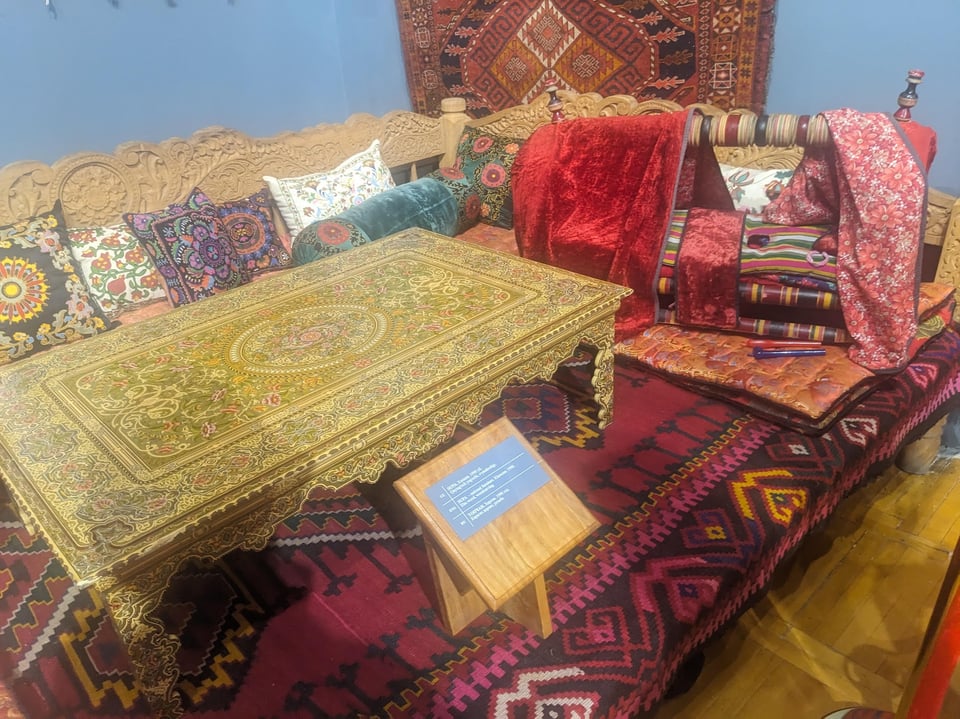
We start with the Museum of Applied Arts right near our hostel, showcasing silk and cotton embroidery, pottery and wood carving. By eavesdropping on a passing tour guide, we learn how the traditional women’s gowns encoded marital status and number of children. In traditional arranged marriages, apparently the groom’s family did not get to meet the bride, and had to infer everything possible from the design and execution of embroideries she had created. A tidy reverse side was a good sign. Pomegranates expressed a desire for many children. Fish indicated she was very quiet, supposedly a positive attribute.
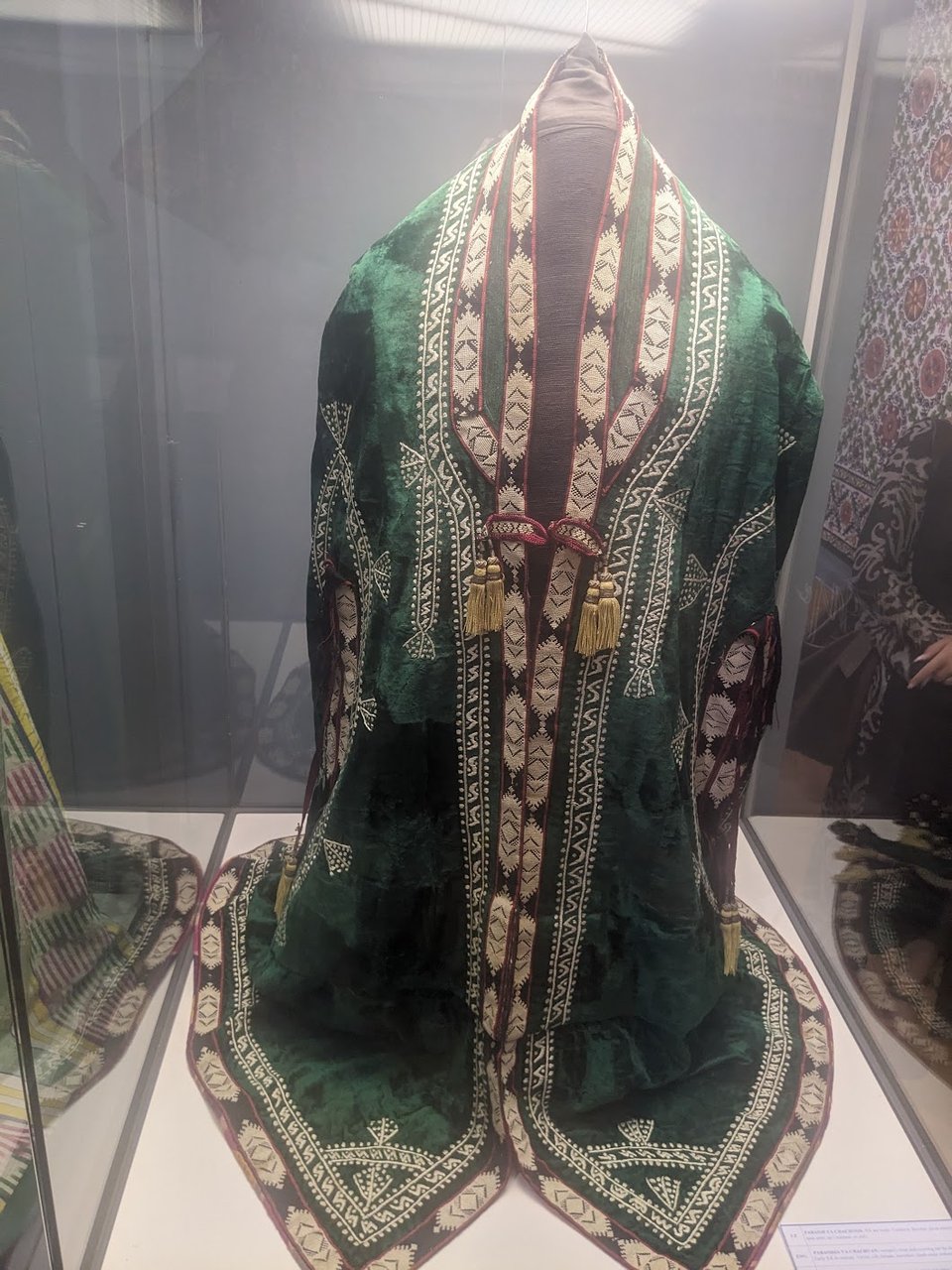
And then, the Tashkent metro, famed for the individually themed stations and Soviet grandiosity. Our first stop is Kosmonavtlar, celebrating the accomplishments of the Soviet space program. It is wonderful! A series of slightly whimsical friezes of astronauts with captions giving further clues, and a delightfully cosmic decor and subdued lighting. There’s Yuri Gagarin (first person in space), the first woman in space, the first lunar rover, the Soyuz-Apollo docking, a few astronomers from other eras, and a couple of others we can’t quite figure out. There’s a particularly eerie image of a faceless astronaut, or perhaps an empty spacesuit.
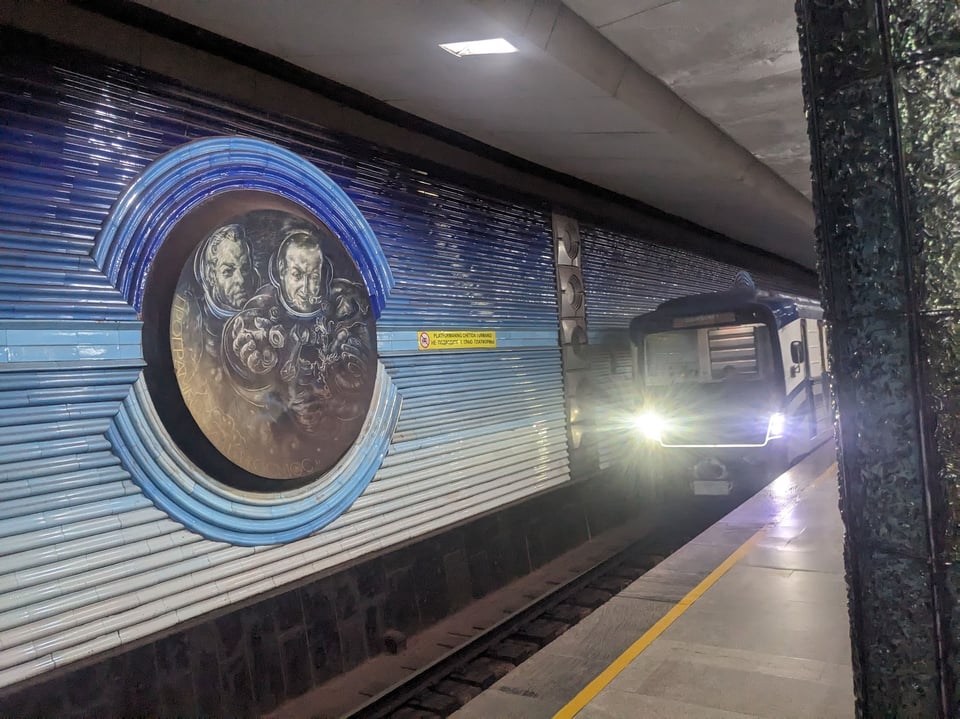
We’re on our way to the circus! We have conflicting information about whether it’s on today or not and what time, so we turn up early and hope for the best. Improbably we slot in the box office’s narrow opening hours and acquire front row tickets. There’s an upsetting odour that Esmay helpfully identifies as animal urine. The building, a kind of big blue ball, captures the “faded glory” aesthetic perfectly, hints of a spectacular yesteryear behind faded paint, cracked concrete and a sad atmosphere. Other than the box office and a guy selling drinks, it’s completely deserted.
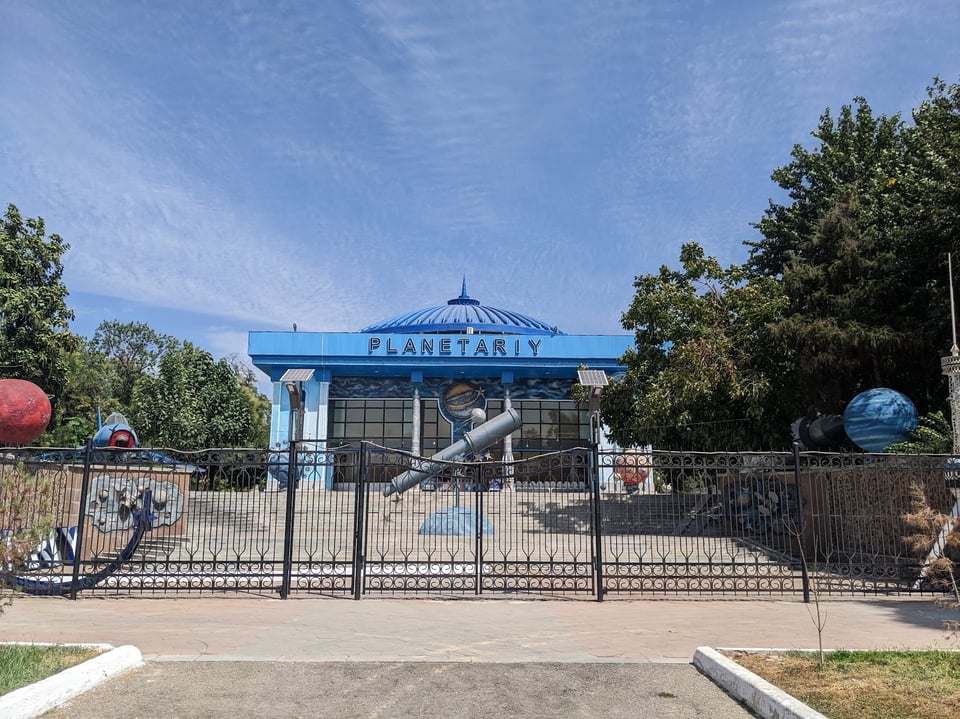
With an hour and a half till the show, we make a quick visit to the bazaar for lunch. We mostly skirt the edges but it’s very much the same as the bazaars of Almaty, Bishkek and Karakol with a bit less chaotic energy. Lunch options are much as they have been everywhere: samsa (very rich meat pies), kebab, shaslik (meat on skewers), plov (meat in rice), or the option I usually gravitate towards, lagman (beef stir fry noodles).
On our return, it’s like the circus suddenly came to town. People everywhere outside! There are pony rides great and small, a bouncy castle, electric toy cars, carnival sideshow hustlers. We somehow resist and find our seats.
The stands are only half full, but it’s a great atmosphere. Before the show kids are lining up to be strapped into harnesses and hoisted up into the air to be flown around the arena. There are shetland pony rides inside the ring, people selling balloon animals, popcorn sellers. It feels like a whole circus experience I have read about but never actually experienced.
A mistress of ceremonies kicks off the show and the band begins to play. Briefly. They will play at the start and end of each half, tucked way up under the roof, where they’re hard to hear, impossible to see, and overall I’m not sure why they bother.
It’s recorded music during all the acts, of which there are many. An aerial artist on a ring with no net finishes hanging by her teeth. An acrobat doing a variety of poses on one hand. A troupe of girls with hula hoops where more seems to go wrong than right. An aging clown and a kind of caberet-esque lady in top hat, tails and a bright blue wig do some physical comedy and bring a few kids onto the stage for hula hooping hijinks.
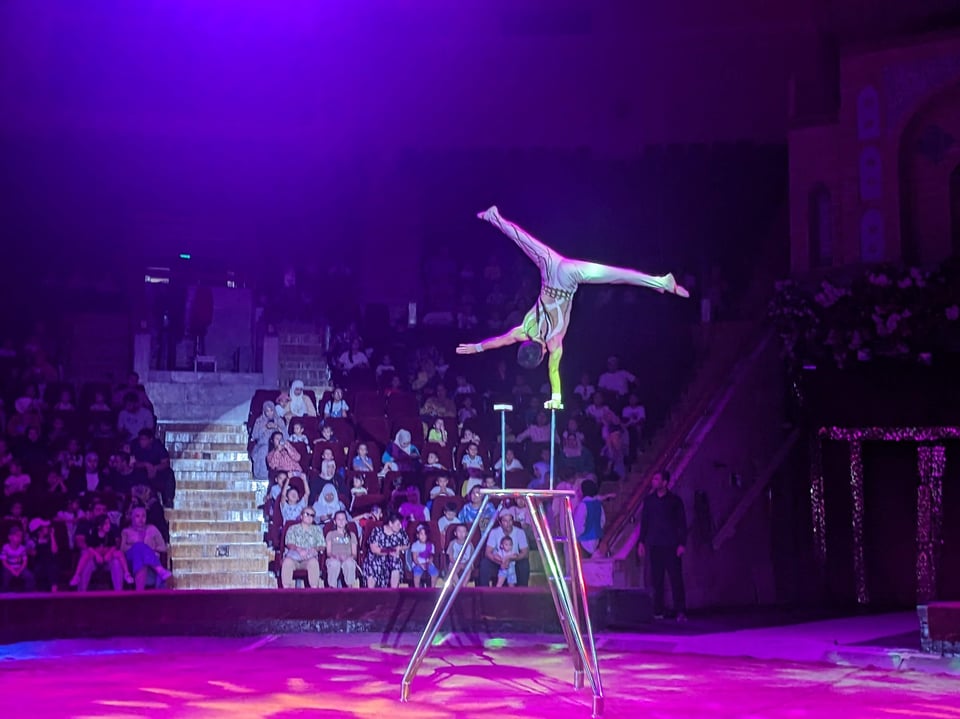
It’s all very familiar stuff at a modest standard until I’m surprised by a performer doing a kind of fire twirling act with LEDs. He starts with two rods, then they become a single staff, then it’s a kind of spinning window frame, until the dimensional progression is completed with a gigantic spinning cube. It’s strangely reminiscent of early computer graphics demos.
During intermission, more joyrides for the kids, and a local TV crew tried to interview Esmay. Her language skills were unfortunately insufficient, but the old lady next to us is good value.
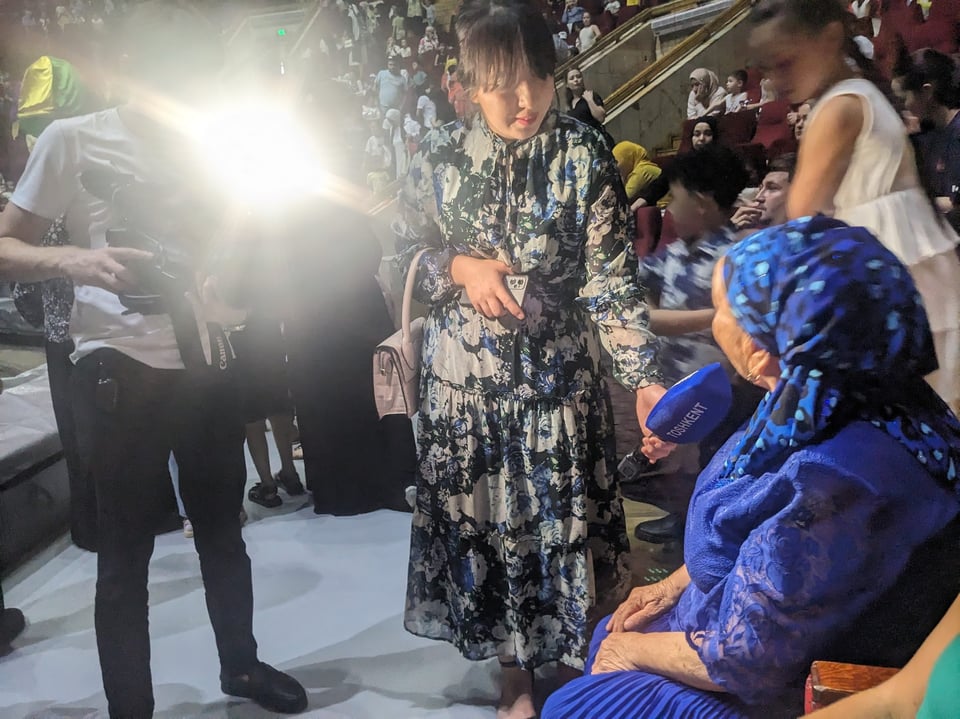
And then, of course, there are the animals. What to think? Blessed by my powers of animal telepathy, I can tell you exactly what they were each thinking:
Horses: “Whee, I get to run! Argh, whip, turn around! Argh, another whip, turn around! Run! Ok let’s get out of here!”
Yaks/cows: “What’s going on? Where am I? Help. Uhhh…I don’t ilke it here.”
Monkeys: “Fuck this shit. Dude, I fucking told you I hate this crap. Screw your stupid colour disc. Ergh. Fine, fine, I caught them, give me the treats. Are we done yet? Dickhead.”
Dalmatians: “Yay! This is great! Roll over? Yeah! Again? Sure! Look at me! Treats? Yes please!”
Lions and tigers: “Sigh. This again? Ten minutes you said, then back to bed? Alright, fine. We doing the flamey hoop thing again? Whatever, bud.”
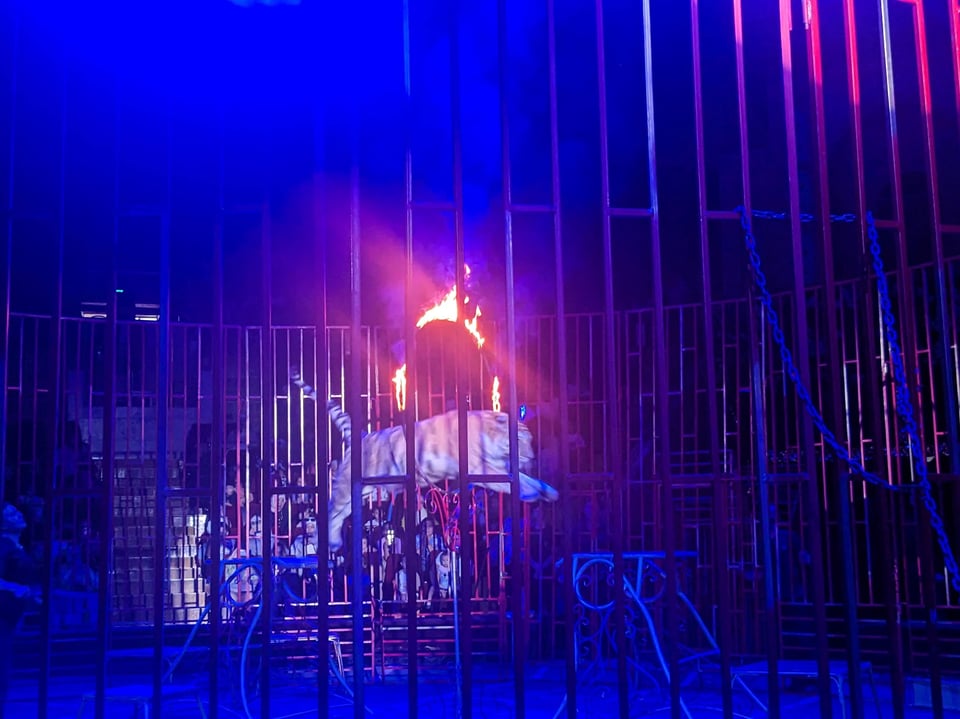
The actual tricks performed by the animals entertained me less than the various mishaps: the tiger doing a big poo seconds after arriving in the ring, swiftly dealt with a man with a bag of sawdust and a broom; another tiger sneaking off his assigned seat during another’s turn; a third that would take any opportunity to go and face-nuzzle with the first.
Finally, but finale-free, it was over.
Tashkent is a very comfortable place to be, but in search of something a bit different I begin a plan to visit the other main cities of historical interest: Samarkand, Bukhara, perhaps even all the way out to Khiva. Since I won’t be hiking, I can leave almost everything behind at this hostel and go ultralight.
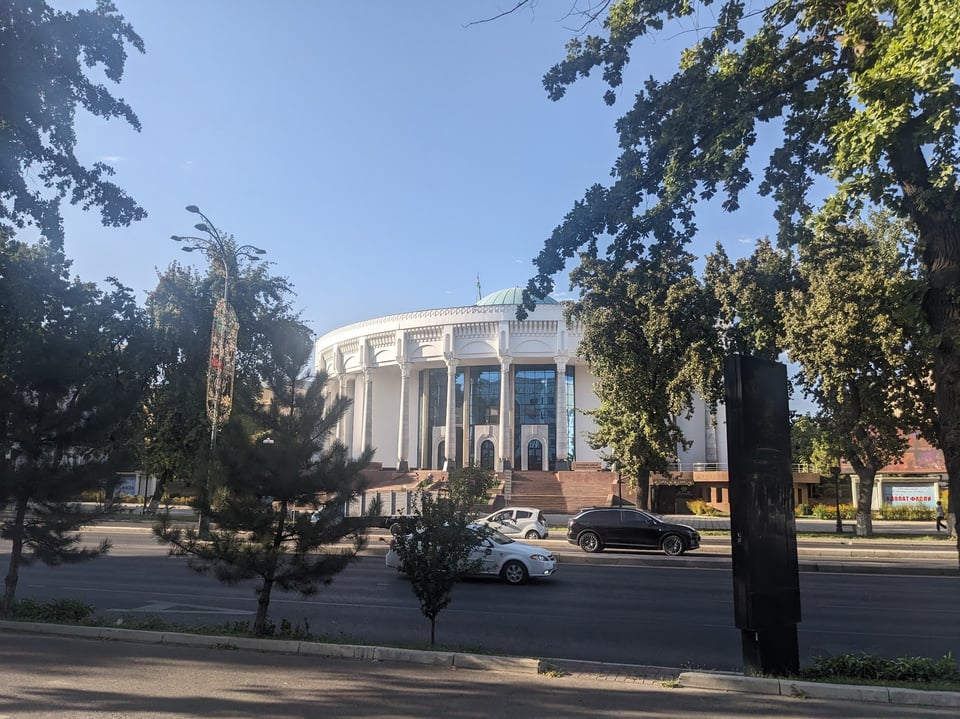
Even better, there is a solid train network, including high speed trains. No more crowded marshrutkas on bumpy roads, just easy, comfortable, efficient travel.
I can’t wait.